An Introduction to Natural Dyes
My journey into natural dyeing began from a place of curiosity, evolved into a passion (borderline addiction) and has become my livelihood. While living in California, I was exposed to an incredible creative community & began to explore natural dyeing. As blue was my favourite colour, I started with Indigo (a blue dye extracted from the leaves of particular plants & one of the oldest know dyes to man). I fell completely and blindly in love with the process, the magic & the alchemy of this incredible plant. It blew my mind to see that you could coax such vibrant colours from nature. From there I went on to explore various other plant-based dyes until I became familiar with the process and methods of natural dyeing. I had always been interested in natural fibres and textiles and being able to create the colours I wanted, added a whole new dimension to my relationship with textiles.
When people speak of natural dyes they are referring to dyes found in plants, fruits, insects & minerals. You can dye with ingredients found in your kitchen such as tea, turmeric, avocado stones/skins, black beans, carrot tops, onion skins, to name a few. Dyes can be found in your garden, your neighbourhood, in fields and forests. You can dye with herbs, flowers, leaves, roots, bark, stems, twigs, seeds, fungi & lichen. You’ll be surprised what you can dye with and the abundance of materials around you that will produce natural colours.
Thousands of plants can produce a seemingly un-endless palette of beautiful colours when applied to yarns, cloth or finished garments. Various different factors such as soil, water PH, region or time of year will influence the resulting shades achieved. Some dyes can be applied without heat and others require simmering to release the colour. In many ways, the process of natural dyeing is very similar to cooking. Just as there are many different ways to cook they are also many different ways to go about natural dyeing. You don’t need much to start on this journey, a lot of the equipment can be found in most kitchens. You will need a pot, some buckets, wooden spoons, bowls and a sieve or strainer. Dyes can be found easily in your environment or specific colours can be sourced in dye supply stores in most countries. They can be combined in the dye pots or layered to further expand the colours possible. Working with natural dyes is a wonderful way to add new life to an old piece, to reinvigorate what you have, to decrease mass consumption and to look at what we have in new ways.
Dyes can be applied to all-natural fibres which fall into two categories, plant-based fibres or animal-based fibres. Plant fibres also referred to as cellulose fibres would be any fibre derived from a plant such as cotton, linen or hemp. Animal or protein fibres would be any fibre that comes from an animal such as wool, yarn or silk. Each fibre reacts differently to another when taking up the dye and so the results you get will also be determined by the fibre or fabric you are using. One of my favourite fabrics to work with is Linen as it takes the dye so beautifully and brings out the textural properties of this ancient cloth.
There is a life and a soul to colour brought forth from nature, the colours seem to dance & change, sometimes they can be hard to define with subtle differences at different times of the day. There is a depth to natural shades that synthetic colours do not have, synthetic colours are flat & one dimensional whereas natural dyes come alive and dance before our eyes. Natural dyes work so harmoniously together, effortlessly complementing each other. You must slow down when working with natural dyes, the process takes time and can’t be rushed and by its very nature is grounding, meditative & enriching.
Apart from the rewarding aspects of working with natural dyeing, they have numerous environmental benefits. They eliminate the harmful waste created by modern synthetic dyeing, they are biodegradable & can be disposed of safely. They are non-toxic to the environment & nonallergic to our skin. Many natural dyes also have antimicrobial properties, making them safer for children in particular.
Experimenting & learning about this process can be an incredibly enriching and empowering process. Spending time gathering materials, whether it’s utilising food waste from our kitchens or going for a walk to gather plants for your dyeing, reconnects you to nature. Reconnecting with our environment & creating something beautiful with our own hands can soothe the soul & ease the mind. In a world that becomes more dependent on technology and more disconnected from nature, taking time to learn these traditional skills is a worthwhile endeavour that may support us through these modern times.
I’m excited to be contributing a few more articles on natural dyeing over the coming weeks. I would love to hear if anyone has any experience, thoughts or questions on the process, please feel free to let me know in the comments below?





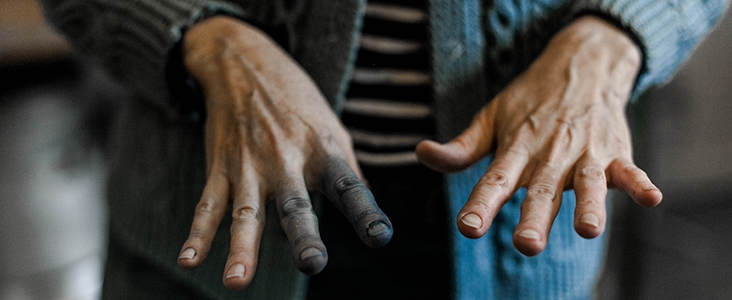
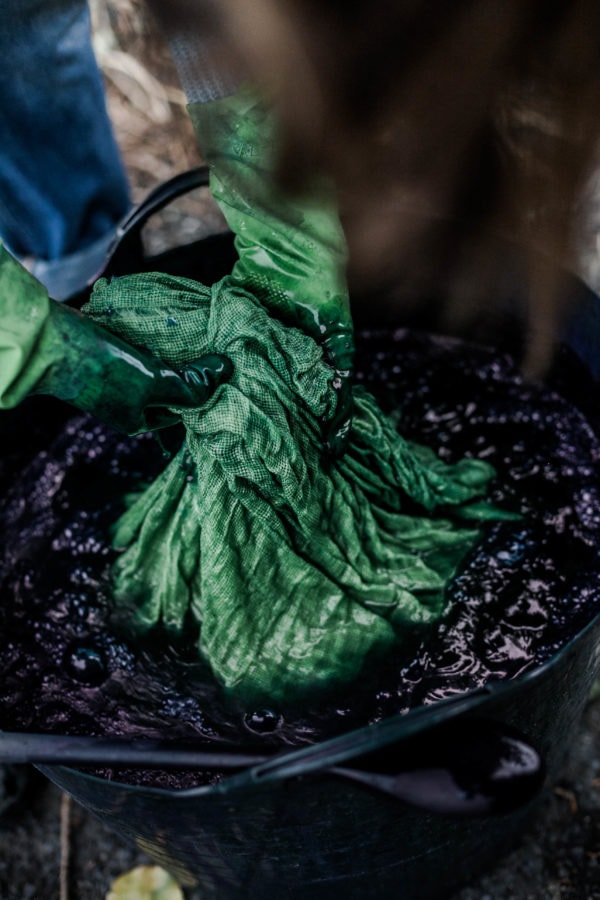
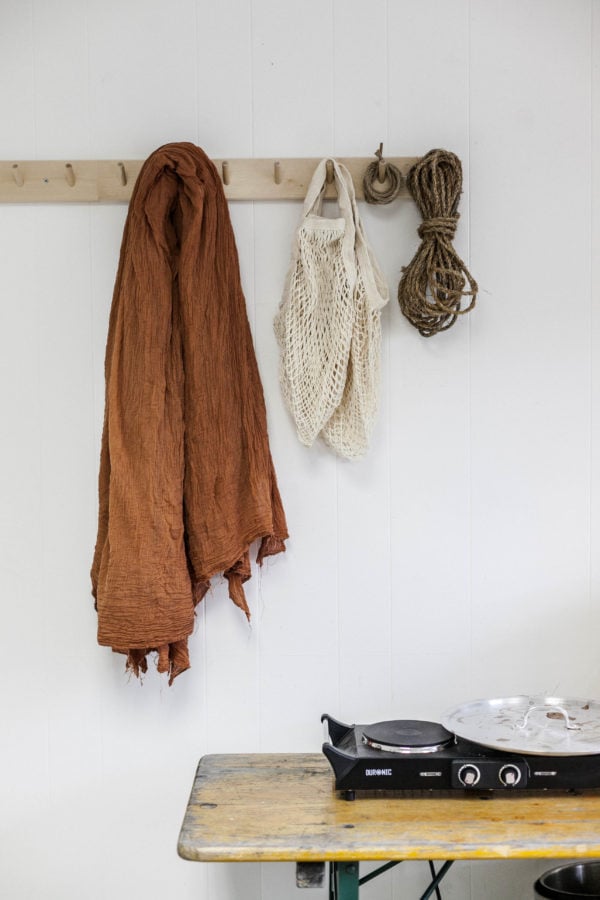
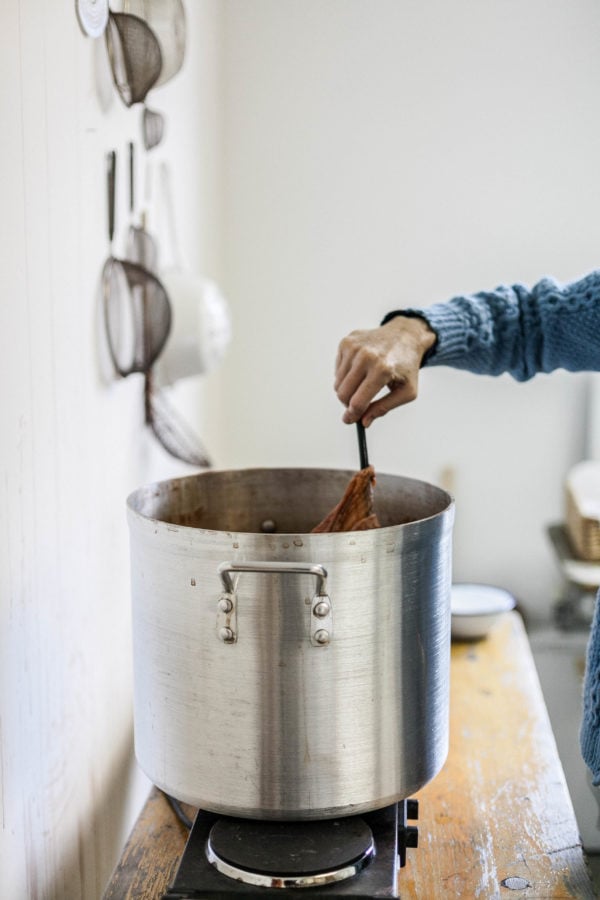
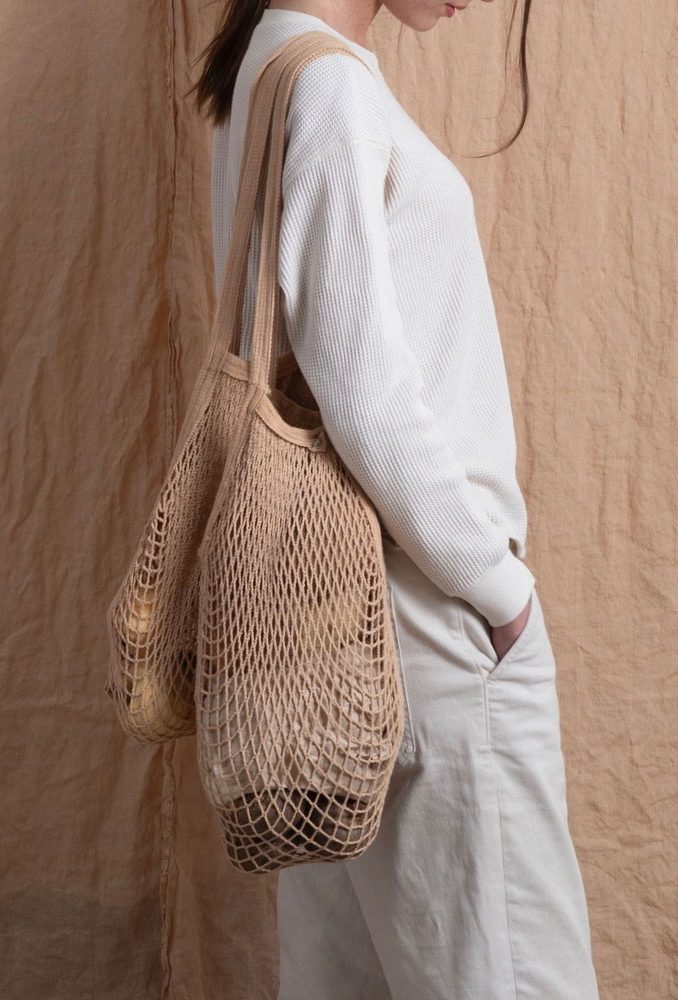
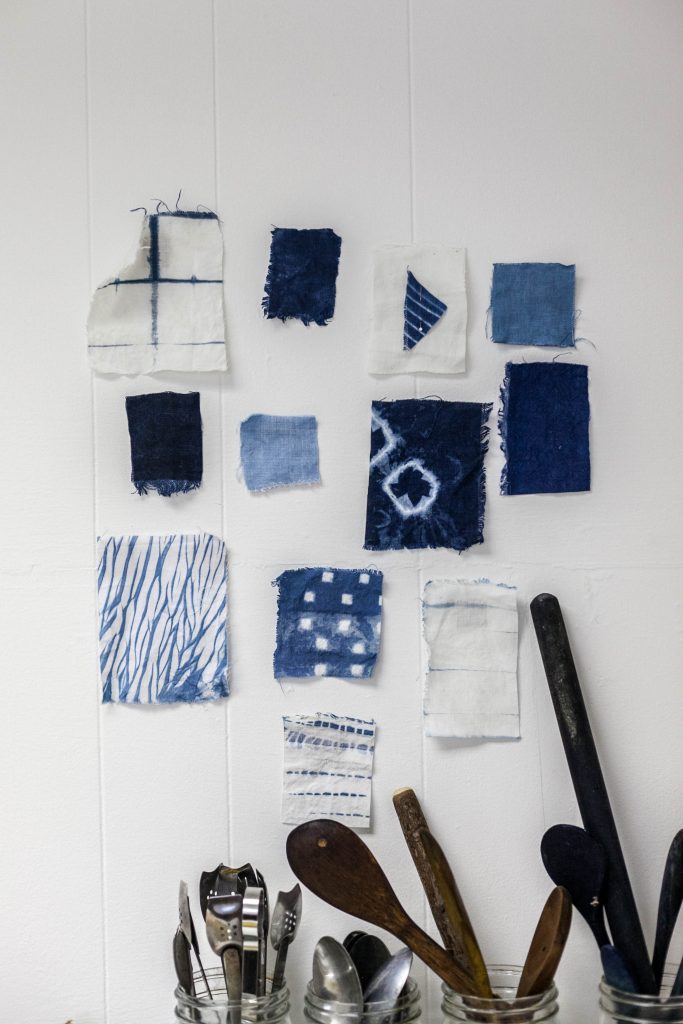








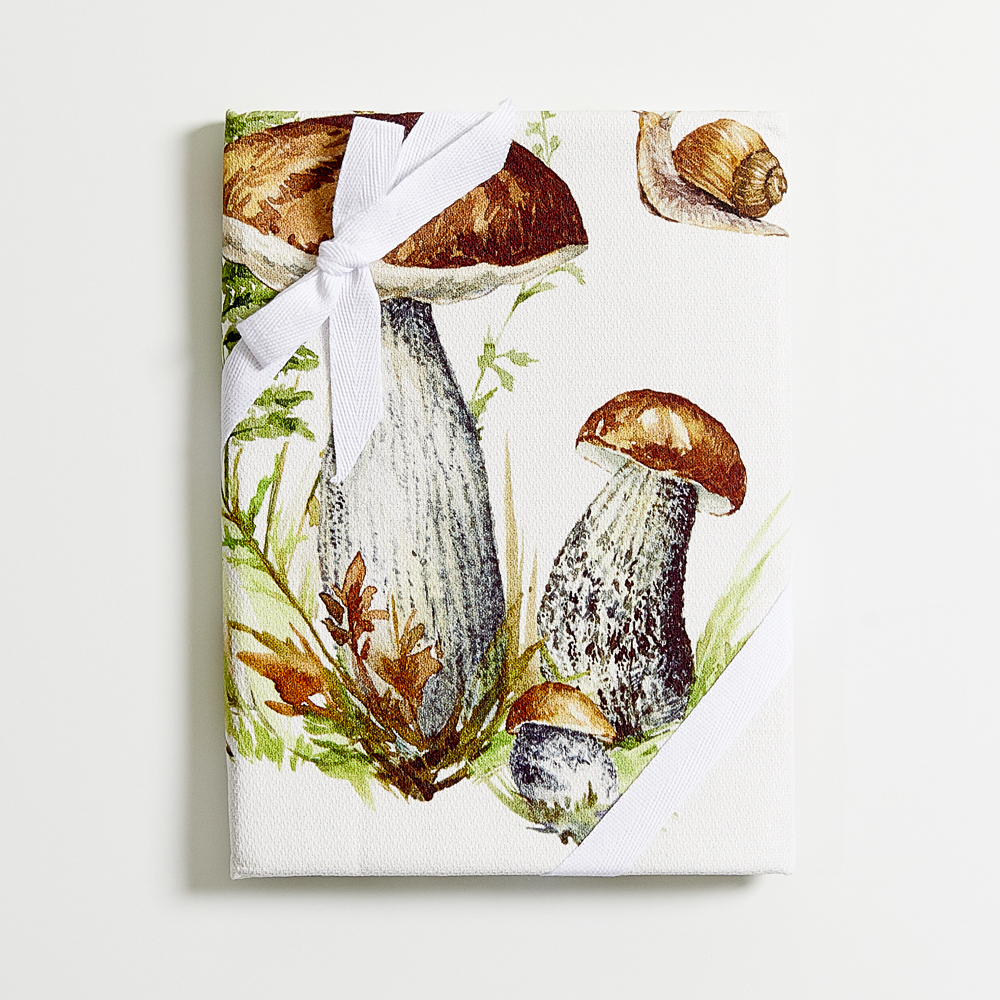







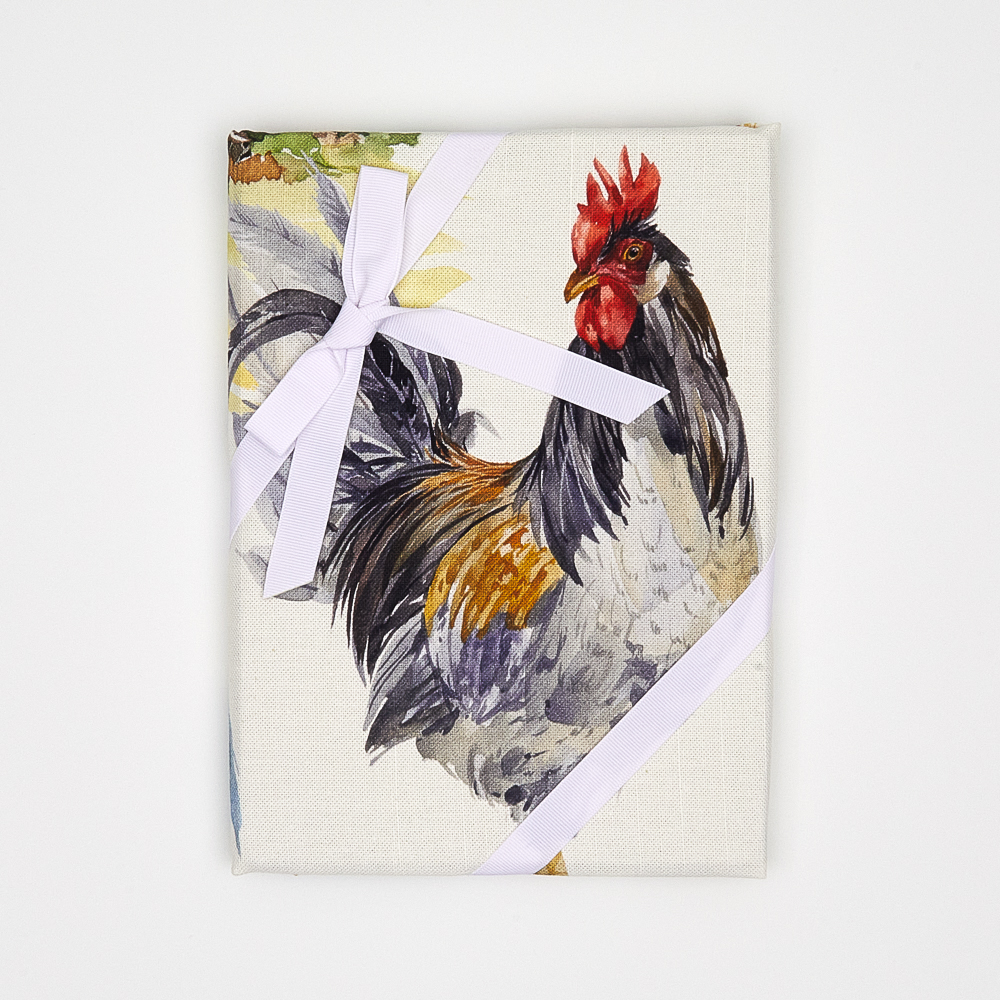






32 Comments
Alexandra Nash
Hello! Great post! First of all, the downloadable pdf didn’t work? Wondering what could be done. Secondly, are the processes or dying linen applicable to say cotton fleece or any other fabric? Or are they completely different from one another? thank you!!!!!!
Michele Walsh
Kathryn, where do you get the materials to make those bags. I want to try the natural dye process and do it on something useful like those bags and on my scrap linen pieces for kitchen towels until I can feel comfortable doing this natural dye process so I can dye my huge lengths of Linen for clothing for myself. Any help would be greatly appreciated, especially since I can’t use any chemicals at all due to being in a chemical accident and since that happened I have issues breathing after even a teeny tiny exposure to anything not natural.
Deborah Williams
I have been using the pre reduced indigo crystals from Dharma in California. It is wonderful! When I have a vat going, if it’s white and not tied down ! It ends up in the vat. I also got doe cochineal bugs to try and have a bag of avocado pits I will try out. It is so amazing to see the results of these experiments. Can’t wait for mor articles!
Kathryn Davey
Hi Deborah, Dharma has some great supplies and their Indigo is so easy to work with. I know exactly what you mean when I first started dyeing I dyed everything I could blue! It was like a wave of blue washed over our home. Avacado is really fun too, best of luck with your experiments x
Elaine Rutledge
What a wonderful article! I live in the south, but haven’t seen indigo offered. Perhaps with renewed interest in natural dyes some will become available. Has anyone tried dying with what we call Beauty Berries. They are a lovely fuscia color, edible and grow well here – sorry I don’t have a photo of the ones in my yard. It’s the wrong time of year for them.
Kathryn Davey
Hi Elaine, thank you for your comment. I haven’t tried dyeing with Beauty Berries but I would love to see what colours they yield. x
Julie Sharrer
So glad for this series. I have been a long time spinner/weaver/dyer; but of course not on linen. I’ve been reading about linen dyeing and trying it and found it hard to hold the dye. I’ll be curious to see what you discover along the lines of natural plant dyeing as I’m extremely interested in that line of dyeing. I have some fabulous turmeric and rosella I grew that I’m dying to dye with. lol. Looking for tips and suggestions! Julie
Kathryn Davey
Hi Julie, thanks for your comment. As you know dyeing with linen is a slightly different process but if you mordant it with a tannin based mordant before dyeing you should get positive results, Rosella and Tumeric sound like a fun place to start! x
Holly Dumont
I’m working through Jane Callendar’s book on Stitched Shibori. I’m eating linen for breakfast!
Kathryn Davey
Hah! That’s hilarious, I love it. Stitched shibori is incredible xo
Susan Lawlor
Dear Trish,
The indigo kit you used was most likely synthetic. There is a source for natural indigo grown in Tennessee! Check out StonyCreekColors.com/products/indigo.
Susan Lawlor
Sorry – my comment was meant for Diana
Kathryn Davey
Thank you Susan for answering Diana’s comment with that resource x
Diana Alm
I dyed some linen using indigo dye in a workshop last spring. The group leader said the dye came in a kit. I’m not sure what that means except perhaps that the plant to get indigo from doesn’t exist in the Midwest. I’m looking forward to your future articles and hope you deal with the effects of regional differences upon what supplies you can gather.
Holly Dumont
A lot of indigo comes from the South. Historically, a lot of indigo was grown there.
Kathryn Davey
Hi Diana, Thank you for your comment. Usually, when people refer to the kits they are speaking about the ones that are sold with the three main ingredients necessary for starting an Indigo vat, measured out and included along with instructions. As I am based in Ireland, unfortunately, I would not be familiar with the specific effect of regional differences upon gathering in the USA but I will keep your topic in mind & do my best to address it as best I can.
Nancy Stockman
I am so looking forward to this series. Birds gifted me with wild pokeberries a few years back. Excited to try natural dyeing with these beautiful purple berries I let them multiply. Huge bushes that took over my gardens. Absolutely gorgeous deep rose color… that did not and evidently will never hold (*now* I find that info). So now the daunting task of ridding my garden of these darned pokeberries.
Holly Dumont
http://www.hillcreekfiberstudio.com/CL-PokeberryRec.html Here’s a recipe for non-fading Pokeberry.
Remember, birds love ’em, so don’t be in a hurry to pull them all out.
Bev Hill
Thanks, Holly for the recipe. I too tried wild Pokeberries. Such a beautiful cranberry red. I used Carol Leigh’s very acidic recipe from the book “A Garden to Dye For” by Chris McLaughlin. But maybe the recipe is not meant for silk which is what I was using because it rinses right out. I will try this one.
Kathryn Davey
Hi Nancy, Thank you for your comment, those pokeberries sound incredible! I found this article for you on Botanical Colours which you might find interesting https://botanicalcolors.com/2011/10/30/pokeberry-dyeing/ Looks like you can dye with them x
Trish Jakielski
More more! I so love the idea and practice of natural dying but the thing I found, in my first attempt was how to retain “a formula” for the colors in case I needed more fabric (I was using it to dye wool for a small rug mat I wanted to hook), how to organize my dye pot area to keep colors separate/neat – in other words all the background stuff even BEFORE trying for a color! But I loved the idea – and the surprise – that some ingredients provided and was pleased that the softness of the colors matched the original water color (a friend painted for me) so I could “return the gift in kind” by making the hooked mat.
Kathryn Davey
Hi Trish, Thank you for your feedback & these are good questions. I find its best to keep a notebook where you write down everything, date, the type of material, the weight of fibre, the amount of dye material you use, the pot/water quantities. Just like with cooking, if you keep track of everything and write it down it will be much easier to repeat if you want to. There will always be differences but it will help you to get closer than if you just “wing it” each time. I like that you liked the surprise of some colours too, I love the magic of that part x
Margo Wendt
I Love this! I, too have delved into natural dying. I started as a spinner of natural fibers & wanted to explore the range of colors that could be obtained without adding toxic chemicals to those natural materials. I have worked with numerous flower leaves, berries,, nut hulls, bugs & tree barks. All have yielded beautiful & fascinating colors. I have dyed garments made from your bleached Il019 as well as the fabric itself with Indigo with wonderful results. I will be doing more! Thanks for this great article ?????
Kathryn Davey
Hi Margo, thank you so much for your comment, sounds like you have had lots of experience with dyeing. How wonderful that you are a spinner, it’s incredible that you can spin and then dye your own fibre. It’s also great to hear that you have had success with the bleached II019 x
Elizabeth Barron
Such a coincidence to see this article! I went to a fine crafts market just before Christmas and met a vendor who uses natural sources for dyeing and I was blown away by the lovely colors she was able to produce. I was so excited about the possibilities that I bought a book called Wild Color by Jenny Dean.. I wanted to read up on it this winter so I can plan for growing some of my own dye sources this summer. In the meantime I look forward to reading more about it here. Great topic!
Kathryn Davey
Hi Elizabeth, I love these types of coincidences & that book is my favourite. Jenny Dean has such an expansive depth of knowledge, she is incredible. I wish you all the best with your dyeing adventures xo
Bev Hill
I am so excited and hoping to learn more from your articles! I have been experimenting with botanical printing and natural dyeing for several years using the wild plants here on our property. I’ve just gleaned whatever I could off the internet and I have a book that was given me. I’ve sometimes just gotten “duds” and other times some surprisingly beautiful results. Then I started putting some of my items into my business and they actually started selling! Last year I grew japanese indigo plants and was a little intimidated when reading about the whole vat process. So I tried an indigo “icebath.” I got a beautiful teal blue. I have more seeds planted for this year and intend to learn the vat process as soon as the leaves are mature this autumn. By far the very best selling silks I’ve done are botanical prints using wild coreopsis sunflowers, which grow by the thousands here… and they make such a beautiful orange dye! I recently started learning to sew with linen in order to offer custom sewing to my customers, and I’m so excited that maybe I can combine the natural dyeing and printing with my sewing with linen!
Trish Jakielski
Do you have details on how to create that orange dye? Do you have a book you have created or….would love to see the colors you are able to achieve! This is an exciting area that is totally new to me.
Kathryn Davey
Hi there, Thank you for your interest, I don’t have a book yet but I’ll be adding more photos in the coming articles and hopefully you will get to see some of the colours I like to create. The orange dye came from “Cutch” which comes from the heartwood of the Acacia Catechu tree x
Bev Hill
I use “Natural Dyes, Plants, & Processes” by Jack Kramer for my main resource. I also have “A Garden to Dye For” by Chris McLaughlin.
To mordant on silks I use 4 oz of alum, 1 oz of cream of tartar, to 3-4 gallons of water for about 1 lb of fiber. I have my silks pre-mordanted before I harvest. Not any sunflowers will do. It must be coreopsis sunflowers. If I am going to print botanical prints I pick whole flowers, stems, leaves, sometimes even roots. If I am going to make orange dyebath, I pick only petals – about 2 1/2 lbs for 1 lb of fiber.
I use an enamel dye pot and cover the petals with about 3 gallons of water. Boil them about 15 minutes. Let it cool. Strain out the petals. Then I dye my fibers for about an hour and leave them overnight before taking them out.
The coreopsis dye is “fugitive” so I hide my silks, cottons, or yarn in the dark for several months to give it a little more staying power. It will bleed a little when rinsed and I instruct my customers to wash only if needed and then in cold water, by hand.
Hope that helps!
As for seeing the colors I got, you can view them on the first page of my website. Scroll close to the bottom of the page to see the most beautiful orange I got. It is titled ” All Consuming Fire.” Here’s the site; http://www.thebowmanbh3.wix.com/bevhill
Good luck if you try it!!!
Kathryn Davey
Dear Bev, that’s so wonderful to hear that you have been experimenting, quite successfully by the sounds of things! Your so lucky to have such an abundance of Coreopsis, I adore that flower, it gives such beautiful results in eco printing and its great to dye with too. It’s fantastic that you have been able to incorporate the dyeing into your business & I wish you continued success with it all! ( especially the indigo endeavours x )
Bev Hill
Oops! Sorry, Kathryn – I thought Trish’s orange question was for me – so I answered it! My mistake! Thank you!